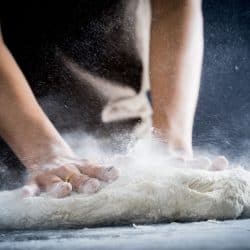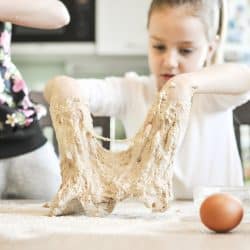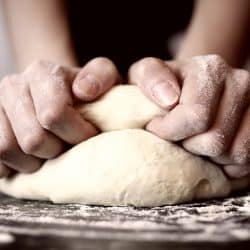Delivery just can't compete with a homemade pizza pie. Making pizza from scratch can be a bit intimidating when starting, though, especially the dough. When should you even stop kneading the dough? No need to worry. We've done the research and have the answer you're looking for.
You should knead a pizza dough until it is smooth and elastic. The exact time will vary based on the recipe and method. By hand, most doughs take three to ten minutes to knead. With a stand mixer with a dough hook, most doughs take eight to ten minutes on low speed.
In this article, we'll look at the tell-tale signs that your dough is ready. We'll also cover the characteristics and problems with over and under-kneaded pizza dough. We'll also look at no-knead dough methods and how they work. Let's take a look at the secrets to the perfectly kneaded dough.
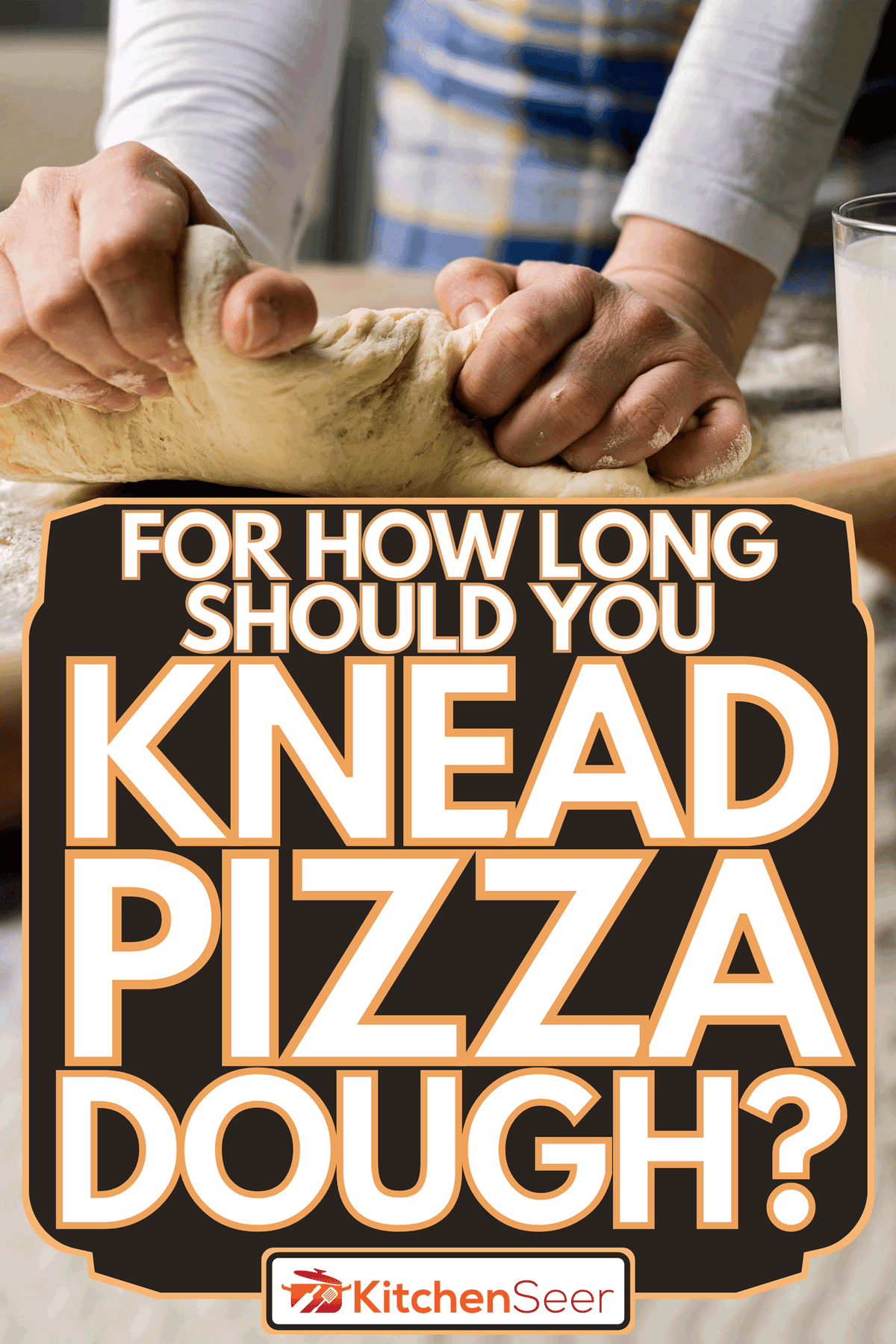
Can you over-knead pizza dough?
It is possible to over-knead pizza dough. Like the classic KitchenAid stand mixer below, this most commonly happens when kneading with a stand mixer with a dough hook. For this reason, it's essential to use a low speed and a timer when kneading with a stand mixer.
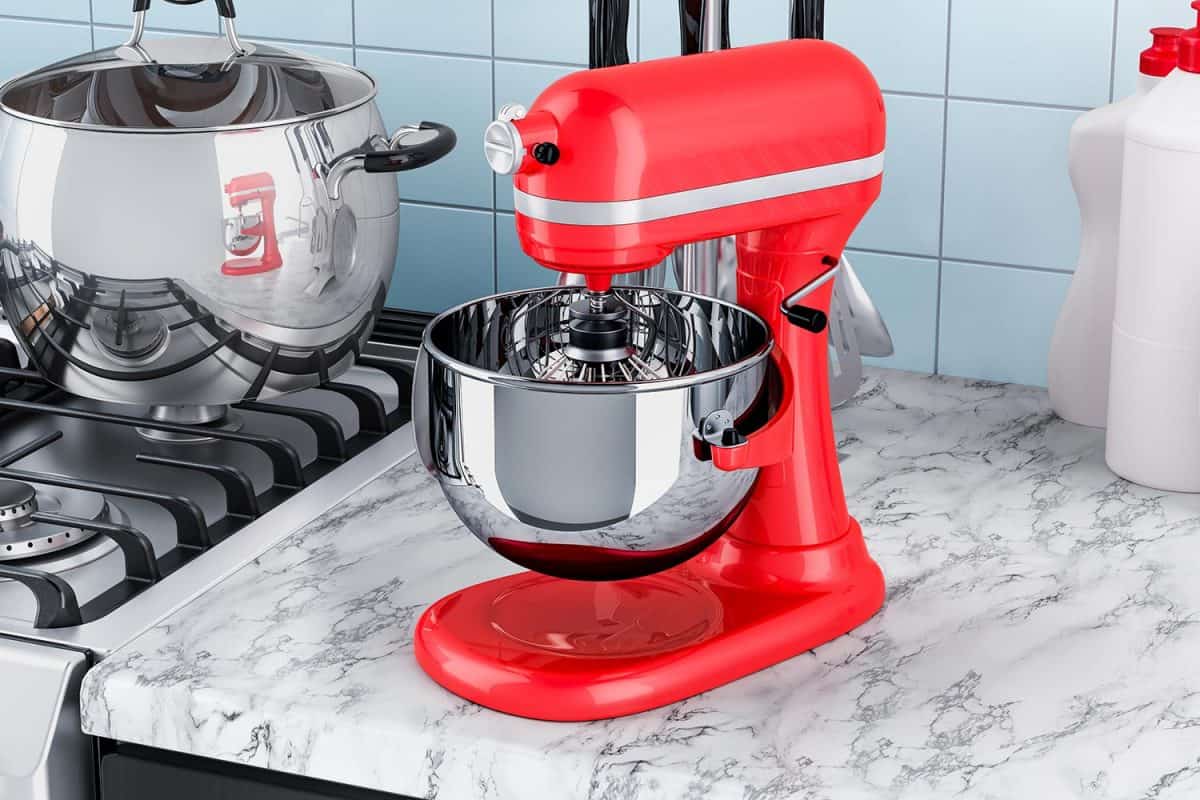
Click here to see this 6-Quart KitchenAid stand mixer on Amazon.
It is possible to over-knead by hand as well, though much less likely. If you are a very efficient kneader and spend more than ten minutes kneading your dough, you may encounter this problem.
The most likely problem you'll encounter with over-kneaded dough is that the gluten will be too strong and tense. Kneading strengthens the gluten in the dough. This is important because it helps the dough hold its form while shaping and baking the pizza. It also helps the dough rise by trapping the gas released by the yeast.
If you develop too much gluten structure, the dough can become tense instead of elastic. This makes it more likely to tear during shaping. It also won't rise as much when baked, leading to a tougher, denser crust.
How to save over-kneaded dough
Over-kneaded pizza dough is not the end of the world. It's very easy to remedy with just one special ingredient: time.
The tense gluten structure that comes from over-kneading will relax over time. If you find the dough is still too tight to form when you shape your pizza, wait fifteen minutes and try again. When you return, the dough should be more relaxed and elastic.
If you find the dough is still too tense after fifteen minutes, give it another ten minutes and check again. Repeat this process until the dough is elastic enough to work with.
What happens if you under-knead pizza dough?
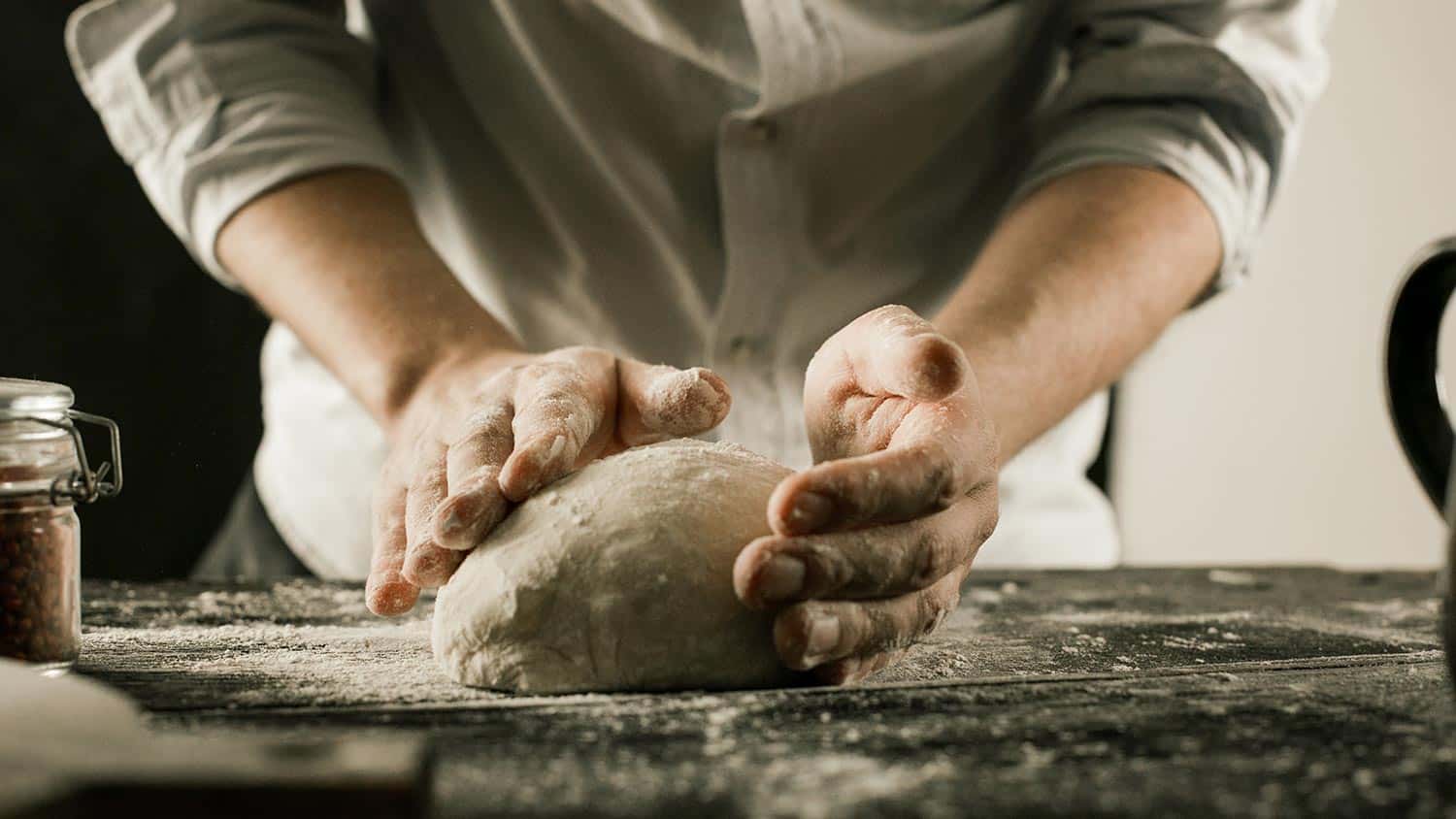
When kneading by hand, you're more likely to encounter under-kneaded dough than over-kneaded. Under-kneaded pizza dough will have two significant problems. The gluten structure won't be developed enough,, and the ingredients will be insufficiently mixed.
Let's consider the gluten structure first. Like over-kneaded dough, under-kneaded too is likely to tear when you stretch it. The way to tell the difference is the texture of the dough. Over-kneaded pizza dough is smooth and tight; under-kneaded pizza dough is lumpy and slack.
Those lumps are a sign that the ingredients haven't been thoroughly mixed. Continue kneading the dough until it is smooth to get the ingredients consistently incorporated throughout the dough.
This dough is going to be challenging to shape. It will quickly spread out on the counter when you form a ball. It's also likely to tear when you try to stretch it out to the desired size or when you pick it up.
You'll also find that, like over-kneaded dough, under-kneaded pizza dough doesn't rise well in the oven. This is because the gluten structure isn't developed well enough to capture the gasses as they expand during cooking. You'll have a tough, dense crust with floury or wet bits due to the ingredients not getting evenly dispersed.
Fortunately, under-kneaded pizza dough is even easier to fix than over-kneaded dough. Just knead it for another minute or two and check if it's ready.
How do you know when to stop kneading pizza dough?
The amount of time necessary to knead pizza dough will depend on several factors. The size of the dough, the flour you use, the amount of water or other liquid ingredients, and even the temperature and humidity of your kitchen can affect kneading time. That's why it's best to check the dough itself for doneness.
How can you tell the pizza dough is ready? There are a few methods and signs to look for.
- The dough should be smooth and lump-free
- When formed into a ball, the dough should hold its shape
- When you poke the dough with a finger, it should bounce back but leave a slight indent
- The dough should pass the windowpane test
What is a windowpane test?

The windowpane test is used by bakers to check bread doughs and pizza doughs for gluten development.
How do you do a windowpane test? Take part of the dough and stretch it slowly and gently while holding it up to a source of light. The dough should be able to stretch thin enough that you can see the light through it without the dough breaking.
Once your dough passes the windowpane test, you can leave it to proof as directed in your recipe. At this time, you might be preparing your other ingredients and your oven. Something some cooks overlook is what they cook their pizza on. Check out our article, "Pizza Tray versus Pizza Stone," to learn about the differences this can make.
How does no-knead pizza dough work?

So far, we've been looking at the conventional methodpizza dough method that most recipes follow. However, many great recipes for pizza dough have come up in the past few years that use a "no-knead" method. While it might sound too good to be true, no-knead pizza dough is accurate, and it may be even better than kneaded pizza dough.
As we've seen, kneading is important to developing gluten structure in conventional dough recipes. Wheat flour contains two important types of proteins: glutenins and gliadins. These proteins are stable in flour, but once water is added to the equation, they can form bonds with each other, making long, stretchy gluten.
When you knead a wet dough, you untangle knots of these proteins present in the flour. You then rub these proteins together, forcing them to form the bonds necessary for proper gluten structure.
On the other hand, No-knead doughs use a different method to get the same result. When you add water to wheat flour, naturally occurring enzymes start to break down the protein in a process called autolysis. With the proteins broken up into smaller pieces, it only takes a little bit of stretching and forming to get them to create a strong network.
Of course, there is a catch. Autolysis is effective, but it isn't fast. No-knead recipes take much longer than their more conventional counterparts. This recipe from Jim Lahey, one of the earliest proponents of the no-knead method, calls for 18 hours of resting time.
These lengthy waits make the no-knead method a no-go for cooks who need to get something on the table tonight. However, making your dough more than a day in advance might do more than save your arms the strain of kneading; it might make better pizza dough.
Are no-knead pizza doughs better?
No-knead pizza doughs have a few advantages when it comes to your final pizza crust. No-knead crusts often have a lighter structure and can have a richer flavor too.
No-knead doughs are typically stretchier than their kneaded counterparts. This can make them easier to stretch out to the size you need for your pizza, and it also helps them spring up more in the oven. That springing is how you get a pizza crust with some larger bubbles and a light, open structure.
The improved flavor of no-knead doughs owes to their longer rest times. As the dough rests, yeasts eat up starch and release carbon dioxide and other compounds. These compounds give no-knead doughs a more savory and complex flavor.
You can improve the flavor even more by slowing down the yeast activity in the refrigerator. This recipe for no-knead Neopolitan pizza dough calls for eight hours of autolysis followed by two to five days slowly fermenting in the fridge.
Of course, there's more to a pizza than just the dough. Cheese, sauce, and toppings are all important, but the temperature of your oven plays a big role too. You can learn more about the ideal temperature for different styles of pizza in our article, "How Hot Should a Pizza Oven Be?"
Final Thoughts
Whether making a traditional Neopolitan pizza or a focaccia-inspired deep dish, great pizza starts with excellent pizza dough. Knowing how long to knead your dough can seem tricky at first, but now you know the signs and tests of dough that's been kneaded to perfection.
We've also seen how, if you have the time, you can make awesome pizza dough without the need to knead. Whichever method you choose for your next pizza, you're sure to be satisfied.
Happy cooking and bon appétit!


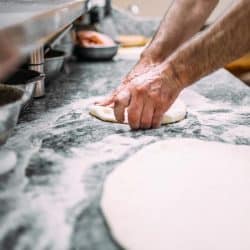

![Baker man hands breadmaking kneading bread dough, How Long To Knead Bread [By Hand And In A Mixer]](https://kitchenseer.com/wp-content/uploads/2021/03/Baker-man-hands-breadmaking-kneading-bread-dough-250x250.jpg)
